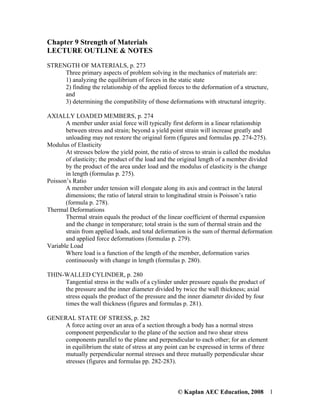Three primary aspects of strength of materials problem solving are analyzing equilibrium of forces, relating applied forces to structural deformation, and determining compatibility of deformations with structural integrity. Members under axial loads will deform linearly between stress and strain initially, then strain may greatly increase beyond the yield point with partial unloading. Stress is the ratio of load to original area under load, and strain is the ratio of deformation to original length. Combined stresses must consider each stress type independently.


